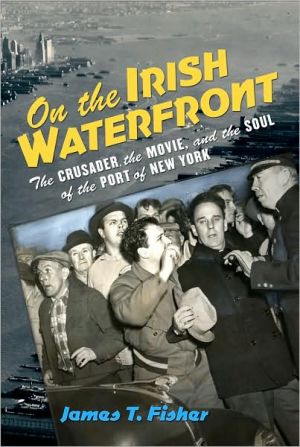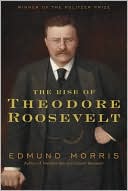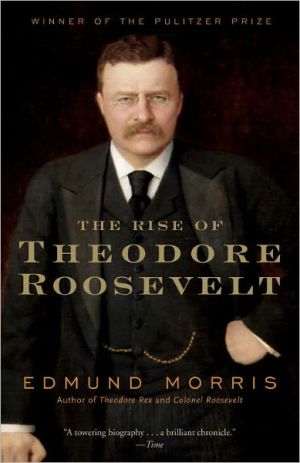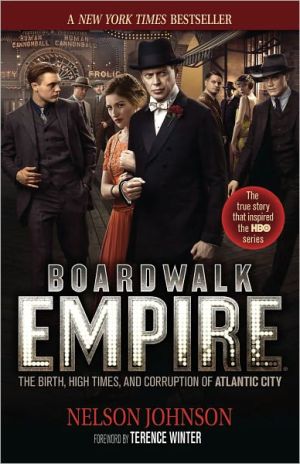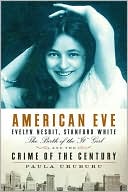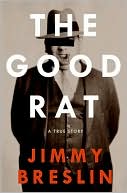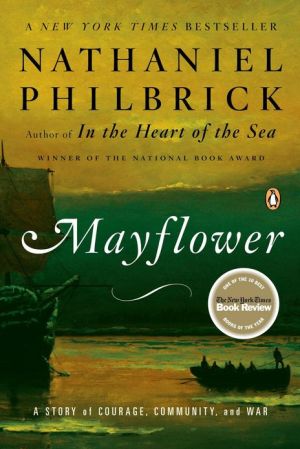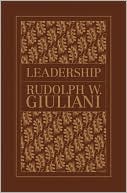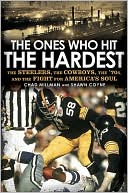On the Irish Waterfront: The Crusader, the Movie, and the Soul of the Port of New York
Site of the world's busiest and most lucrative harbor throughout the first half of the twentieth century, the Port of New York was also the historic preserve of Irish American gangsters, politicians, longshoremen's union leaders, and powerful Roman Catholic pastors. This is the demimonde depicted to stunning effect in Elia Kazan's On the Waterfront (1954) and into which James T. Fisher takes readers in this remarkable and engaging historical account of the classic film's backstory.\ Fisher...
Search in google:
Site of the world's busiest and most lucrative harbor throughout the first half of the twentieth century, the Port of New York was also the historic preserve of Irish American gangsters, politicians, longshoremen's union leaders, and powerful Roman Catholic pastors. This is the demimonde depicted to stunning effect in Elia Kazan's On the Waterfront (1954) and into which James T. Fisher takes readers in this remarkable and engaging historical account of the classic film's backstory. Fisher introduces readers to the real "Father Pete Barry" featured in On the Waterfront, John M. "Pete" Corridan, a crusading priest committed to winning union democracy and social justice for the port's dockworkers and their families. A Jesuit labor school instructor, not a parish priest, Corridan was on but not of Manhattan's West Side Irish waterfront. His ferocious advocacy was resisted by the very men he sought to rescue from the violence and criminality that rendered the port "a jungle, an outlaw frontier," in the words of investigative reporter Malcolm Johnson. Driven off the waterfront, Corridan forged creative and spiritual alliances with men like Johnson and Budd Schulberg, the screenwriter who worked with Corridan for five years to turn Johnson's Pulitzer Prize-winning 1948 newspaper exposé into a movie. Fisher's detailed account of the waterfront priest's central role in the film's creation challenges standard views of the film as a post facto justification for Kazan and Schulberg's testimony as ex-communists before the House Committee on Un-American Activities. On the Irish Waterfront is also a detailed social history of the New York/New Jersey waterfront, from the rise of Irish American entrepreneurs and political bosses during the World War I era to the mid-1950s, when the emergence of a revolutionary new mode of cargo-shipping signaled a radical reorganization of the port. This book explores the conflicts experienced and accommodations made by an insular Irish-Catholic community forced to adapt its economic, political, and religious lives to powerful forces of change both local and global in scope. Publishers Weekly The true crime story behind Elia Kazan's award-winning 1954 film On the Waterfront is exhaustively detailed in this new history from Catholic historian Fisher (Communion of Immigrants), who follows the tight web of dockworkers, union organizers, crime bosses, politicians and church leaders bound for decades to the corrupt Irish-controlled ports. Fisher begins just after the Civil War, when Irish Tammany assumed control of Manhattan's Lower West Side waterfront with a mob-like system of violence and intimidation. Trading in bribes, fees, and exploitive labor that impoverished the communities they helped build, the crime bosses finally met their match in the 1940s, with the Jesuit priest John M. "Pete" Corridan. A hard-drinking, foul-spoken, yet unimpeachable leader hewn from the same rock as the wicked men he opposed, Corrigan possessed a knowledge of dock dynamics and a tactician's skill to rival any of the crime bosses'; in his effort to retake the ports, Corrigan played politicians, the media, and even Hollywood powerbrokers while converting thousands to the cause. Possibly the most thorough genealogy of Irish-American waterfront crime to date, this dense work may put off some readers, but will more than satisfy anyone devoted to this singular slip of New York history. Copyright © Reed Business Information, a division of Reed Elsevier Inc. All rights reserved.
Click to read or download
Prologue: Pete Barry's Punch Introduction: The Port's Irish Places\ Part I. Boys of the Irish Waterfront\ 1. Chelsea's King Joe\ 2. The Boss\ 3. Becoming Mr. Big\ 4. The Longshoreman's Grandson\ Part II. The Soul of the Port\ 5. A Labor Priest in the Catholic Metropolis\ 6. The Crusader\ 7. Covering the Waterfront\ 8. The Hollywood Prince\ 9. Meeting across the River\ 10. Priest and Worker\ 11. An Intimacy with Violence\ Part III. Waterfront Apotheosis\ 12. A Season for Testimony\ 13. "The Hook"\ 14. Good Citizens\ 15. Saving the Picture\ 16. The Mile Square City's Moment\ 17. The Priest in the Movie\ 18. "The Corruption Goes Deep"\ 19. The Poetry of Success\ Epilogue: Souls of the (Port) Apostolate Acknowledgments Notes Index
\ Publishers WeeklyThe true crime story behind Elia Kazan's award-winning 1954 film On the Waterfront is exhaustively detailed in this new history from Catholic historian Fisher (Communion of Immigrants), who follows the tight web of dockworkers, union organizers, crime bosses, politicians and church leaders bound for decades to the corrupt Irish-controlled ports. Fisher begins just after the Civil War, when Irish Tammany assumed control of Manhattan's Lower West Side waterfront with a mob-like system of violence and intimidation. Trading in bribes, fees, and exploitive labor that impoverished the communities they helped build, the crime bosses finally met their match in the 1940s, with the Jesuit priest John M. "Pete" Corridan. A hard-drinking, foul-spoken, yet unimpeachable leader hewn from the same rock as the wicked men he opposed, Corrigan possessed a knowledge of dock dynamics and a tactician's skill to rival any of the crime bosses'; in his effort to retake the ports, Corrigan played politicians, the media, and even Hollywood powerbrokers while converting thousands to the cause. Possibly the most thorough genealogy of Irish-American waterfront crime to date, this dense work may put off some readers, but will more than satisfy anyone devoted to this singular slip of New York history. \ Copyright © Reed Business Information, a division of Reed Elsevier Inc. All rights reserved.\ \ \ \ \ Library JournalFisher captures with great clarity and encyclopedic detail the multilayered and fascinating history of the New York-New Jersey waterfront depicted in Elia Kazan's Oscar-winning 1954 film, On the Waterfront. Fischer's impeccable research delves into the real-life stories behind the characters, particularly Pete Corridan, the crusading Catholic priest who tried to reform the longshoremen's union and the recently deceased Bud Schulberg, who adapted Malcolm Johnson's 1949 Pulitzer Prize-winning "Crime on the Waterfront" newspaper series for the screen. Fisher (theology & American studies; Communion of Immigrants: A History of Catholics in America) considers every angle of the story astutely and meticulously, setting it well in its mid-20th-century American context. VERDICT This engaging narrative is essential reading for both labor historians and cinema buffs, plus anyone studying the waterfront, working-class and immigrant history, anticommunism, blacklisting, and the House Un-American Activities Committee.—Donna L. Davey, NYU Lib.\ \ \ From the Publisher"It may be hard for some to imagine an era when the waterfronts clustered around New York City constituted America's dominant commercial port. Yet as late as the 1950s the region's 900 piers-spread over Manhattan's West Side, South Brooklyn, and Hoboken and Jersey City, N.J.-handled more cargo than any port in the world. This is the setting for James T. Fisher's On the Irish Waterfront, a fascinating work of history that explores the rise of New York's commercial port from the early 1900s to the 1950s and the corruption that eventually infiltrated all levels of the cargo business, until a crusading priest helped to put a stop to it-and inspired a classic film along the way."-Edward T. O'Donnell, Wall Street Journal, 9 September 2009\ "Amply fills in the gaps among organized crime, public officials and the street priests and Catholic hierarchy. . . also provides new insights into the long-debated claim that the film was intended by its screenwriter, Budd Schulberg, and its director, Elia Kazan, as a justification for their naming names of former Communist associates in their testimony before the House Un-American Activities Committee. He also clarifies the context of the famous utterance of Mayor Frank Hague of Jersey City: 'I am the law.' It turns out Mayor Hague was not flaunting his legendary power (he did not have to). He was intervening to get jobs for two truants rather than complying with legalities by sending them back to school.-Sam Roberts, New York Times, 29 January 2010\ "Fisher has spent more than a decade studying the culture, history and soul of the docks and piers that once lined the West Side of Manhattan and the riverfront of Jersey City and Hoboken. He also has researched the making of the film and the controversies it touched off long before it appeared in theaters in 1954. As a result, Fisher probably knows more about the waterfront than any living person who has not-as I assume he hasn't, although one never knows-stood in line at a shape-up. Fisher has poured all that knowledge into a glorious book that ought to change how movie critics view Schulberg's cinematic creation and how cultural historians interpret working-class culture in New York and New Jersey during the middle years of the 20th century."-Terry Golway, America, 2 November 2009\ "Fisher captures with great clarity and encyclopedic detail the multilayered and fascinating history of the New York-New Jersey waterfront depicted in Elia Kazan's Oscar-winning 1954 film, On the Waterfront. Fisher's impeccable research delves into the real-life stories behind the characters, particularly Pete Corridan, the crusading Catholic priest who tried to reform the longshoremen's union and the recently deceased Budd Schulberg, who adapted Malcolm Johnson's 1949 Pulitzer Prize-winning 'Crime on the Waterfront' newspaper series for the screen. Fisher considers every angle of the story astutely and meticulously, setting it well in its mid-20th-century American context. This engaging narrative is essential reading for both labor historians and cinema buffs, plus anyone studying the waterfront, working-class and immigrant history, anticommunism, blacklisting, and the House Un-American Activities Committee."-Library Journal, 1 October 2009\ "For anyone who has ever been moved by Marlon Brando delivering the immortal line, 'I coulda been a contender,' this book is a must. Through state-of-the-art research, James T. Fisher recreates the tough, corrupt universe of the waterfront, a huge commercial and criminal bounty where careers were built, noses broken, dissenters murdered, riches gained and lost-and it all became the basis for one of the most cherished American movies of all time. On the Irish Waterfront is a major act of historical restoration and a fascinating yarn told by a skilled literary maestro."-T. J. English, New York Times bestselling author of Paddy Whacked, The Westies, and Havana Nocturne\ "James T. Fisher's On the Irish Waterfront gives a richly detailed portrait of the world of the New York Harbor within which lived the real people behind the characters in Elia Kazan's great film, especially the dynamic and charismatic priest Father Pete Corridan, whose efforts on behalf of the longshoremen won him the enmity of both the mobsters and many within the Church itself. Deeply researched and wonderfully written, On the Irish Waterfront brings to vivid life a tumultuous era in American labor history that itself brought into being one of our greatest films."-Leo Braudy, University Professor and Bing Professor of English and American Literature, University of Southern California, author of From Chivalry to Terrorism and The World in a Frame\ "With a subject as deep and as dark as the harbor, in a voice as colorful and as lively as his characters, James T. Fisher weaves a remarkable tale of saints and sinners-of Jesuits and gangsters, longshoremen and waterfront chieftans, not to mention Hollywood's elite. His readers will never look at the Hudson River piers in quite the same way again."-Helene Stapinski, author of Five-Finger Discount\ "James T. Fisher penetrates the code of silence that characterized the Irish culture of New York's waterfront, bringing to life the violent world of longshoremen, crooked unionists, politicians and businessmen, crusading writers, and Catholic clerics fighting over control of the nation's busiest port and what moral code it would live by. He brilliantly reconstructs the story behind On the Waterfront and the actual events on which that great film was based."-Joshua B. Freeman, The Graduate Center, City University of New York, author of Working-Class New York and In Transit\ "What a story: Religion, politics, ethnicity, labor, and a classic film. By giving a deep reading to this rich cultural mix, James T. Fisher reveals much about urban life and social change in twentieth-century America."-James M. O'Toole, Clough Professor of History, Boston College, author of Passing for White and editor of Habits of Devotion\ "James T. Fisher's treatment of the 'Spiritual Front' that brought the Irish Catholic priest Father John Corridan and the Jewish writer Budd Schulberg together in a common crusade for justice-and of their triumph, not on the waterfront, but on the silver screen-is scintillating. Fisher is a good writer and a very fine historian-intellectually sophisticated, indefatigable, wonderfully sensitive to human drama and foibles. On the Irish Waterfront covers an amazing amount of terrain. Urban, cultural, intellectual, and labor history all fall within Fisher's purview and magnify the importance of his work."-Bruce Nelson, Dartmouth College, author of Workers on the Waterfront and Divided We Stand\ \ \
